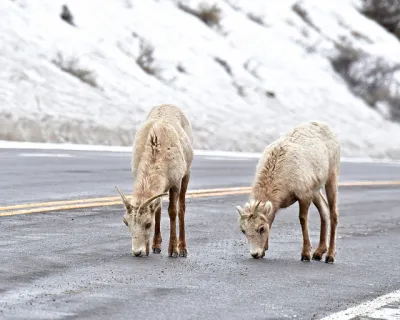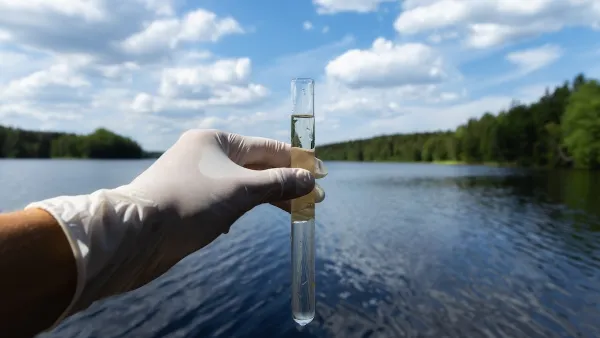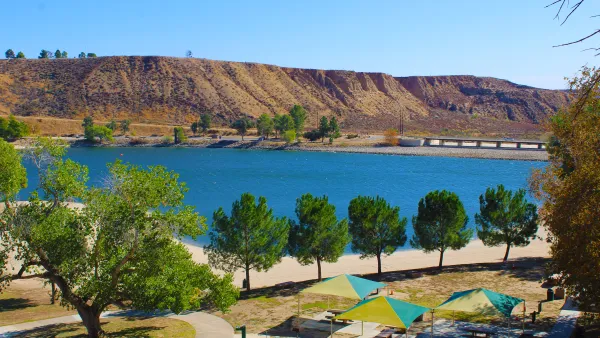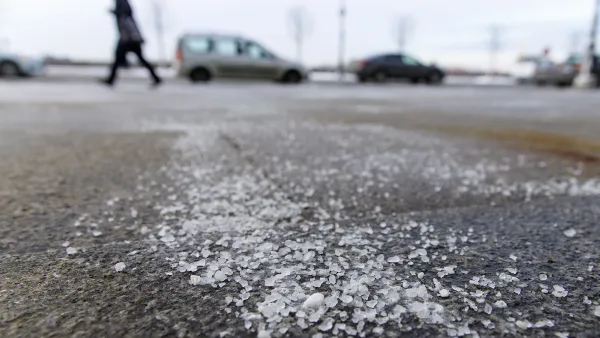According to scientists, increasingly salty lakes pose health risks not just to their fish and plant life but to the people who drink their water.

A study published in Proceedings of the Natural Academy of the Sciences found that in the 371 lakes observed, 44% showed evidence of long-term salinization. "No federal body tracks how much salt gets spread on our roadways or makes its way into our lakes. So the researchers hoovered up a vast number of different data sets, produced by states, municipalities and universities," Ben Guarino reports in the Washington Post. The study has big implications for drinking water around the country. "Extrapolating that finding for all of North America, at least 7,770 lakes are at risk of elevated salt levels — a likely underestimate," Guarino reports. This salt is coming, in large part, off roads and highways.
These salts cannot all be filtered out of drinking water. "Increased salt in drinking water poses health problems to humans who have kidney trouble, use dialysis or have hypertension," Guarino writes. And while some suggest that better management of salt use could curb the issue, there's evidence that salt consumption may continue to rise. "In winter 2014, the Wall Street Journal reported that road salt prices surged by 20 percent due to a huge demand," Guarino writes.
This exposes another challenge to the preservation of lakes in North America, which lost some of their protections following legislation from a Republican Congress, signed by President Trump, repealing Surface Mining's Stream Protection Rule.
FULL STORY: Salt from icy roads is contaminating North America’s lakes

National Parks Layoffs Will Cause Communities to Lose Billions
Thousands of essential park workers were laid off this week, just before the busy spring break season.

Retro-silient?: America’s First “Eco-burb,” The Woodlands Turns 50
A master-planned community north of Houston offers lessons on green infrastructure and resilient design, but falls short of its founder’s lofty affordability and walkability goals.

Delivering for America Plan Will Downgrade Mail Service in at Least 49.5 Percent of Zip Codes
Republican and Democrat lawmakers criticize the plan for its disproportionate negative impact on rural communities.

Test News Post 1
This is a summary

Test News Headline 46
Test for the image on the front page.

Balancing Bombs and Butterflies: How the National Guard Protects a Rare Species
The National Guard at Fort Indiantown Gap uses GIS technology and land management strategies to balance military training with conservation efforts, ensuring the survival of the rare eastern regal fritillary butterfly.
Urban Design for Planners 1: Software Tools
This six-course series explores essential urban design concepts using open source software and equips planners with the tools they need to participate fully in the urban design process.
Planning for Universal Design
Learn the tools for implementing Universal Design in planning regulations.
EMC Planning Group, Inc.
Planetizen
Planetizen
Mpact (formerly Rail~Volution)
Great Falls Development Authority, Inc.
HUDs Office of Policy Development and Research
NYU Wagner Graduate School of Public Service





























